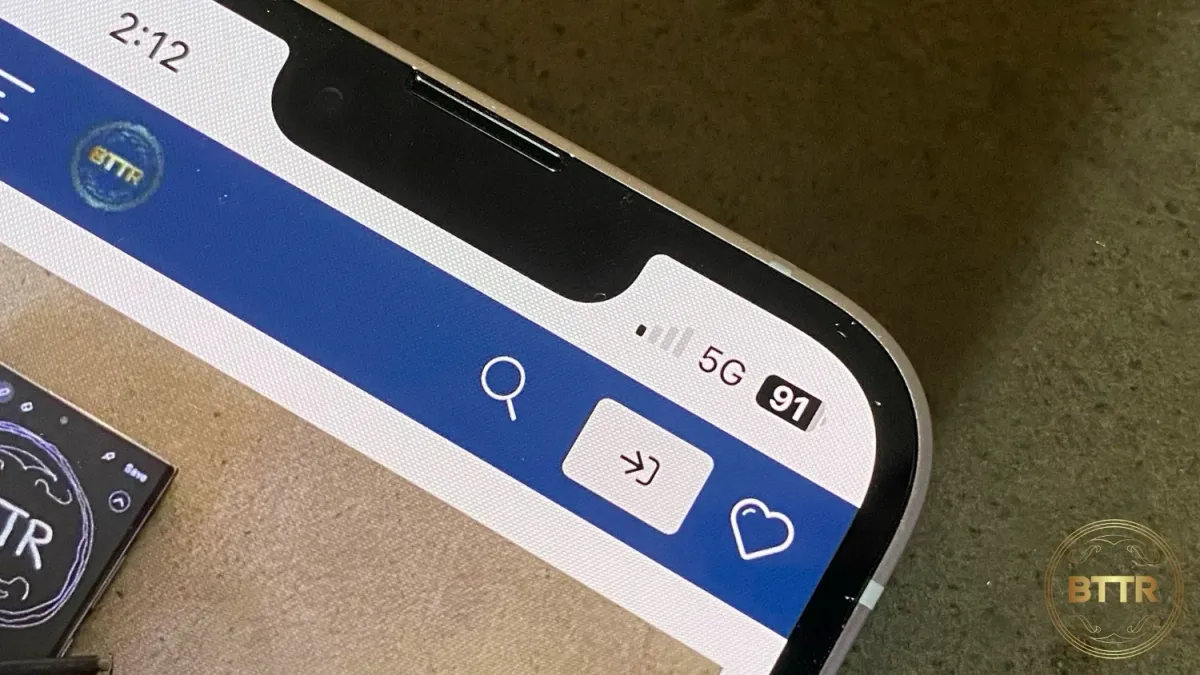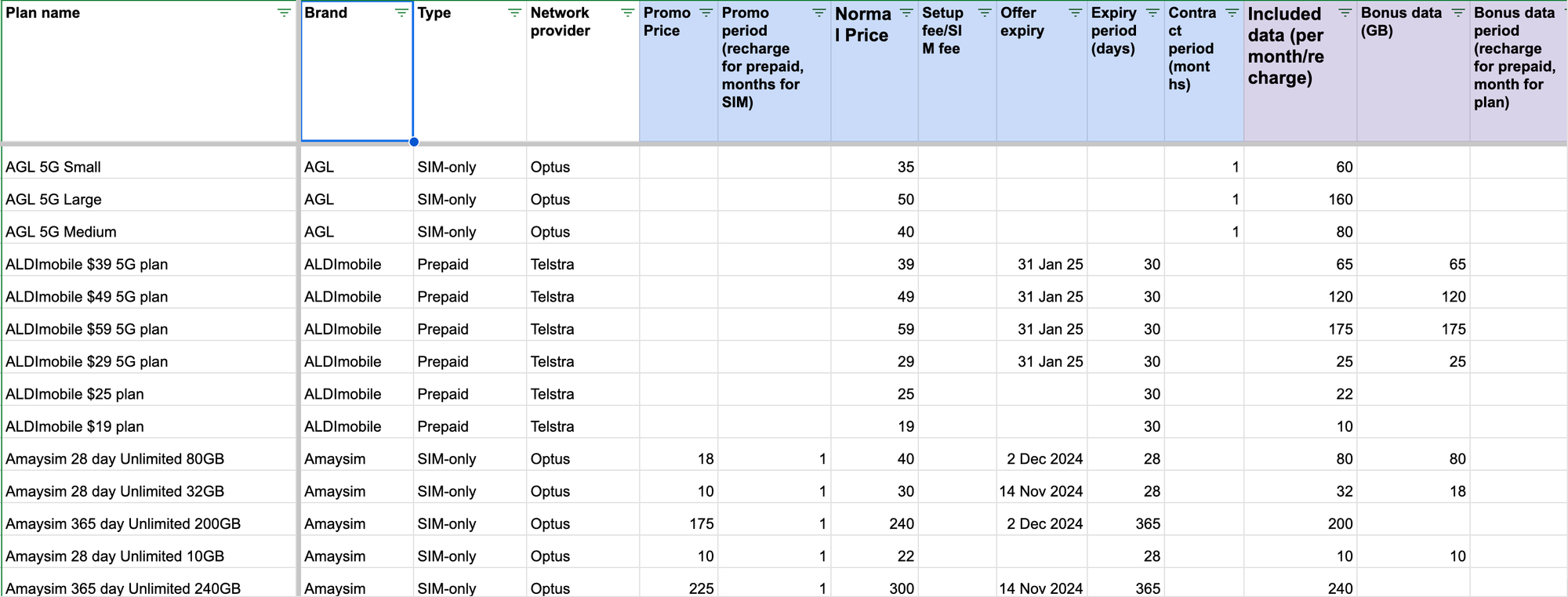I analysed 264 mobile SIM plans to help find your next mobile plan
Paid subscribers get a link to the full spreadsheet with all the data and formulas to help make their own decisions.

A few years ago, I joined comparison platform Finder to lead the growth of its mobile and broadband comparisons. I spent a lot of time diving into the nitty gritty of plans, working with the engineers to build fancy comparison tables with bold buttons that would help you convert to a partner, so Finder would get paid.
The problem with this approach – which is the same approach used by Whistleout and Canstar, by the way – is that these comparison platforms don't show you the best plan by default unless the provider offering that plan pays them.
Not to say that these sites don't do a lot of really hard work to break down lots of complex information to make comparison easier. They definitely do! But for anyone just looking to know what the best plan for their needs is, comparison services don't give the full picture.
So when I needed to try and find a new mobile plan for my son (who kept using up all his mobile data), I decided to dive in to see what is currently available on the market in a spreadsheet to work out what's the best option for us.
And because I spent way too much time on it, I've decided I'm going to write it up here for as exclusive content for paid subscribers.
What you can expect from the data:

My spreadsheet collects the name and key information for every prepaid and postpaid SIM-only mobile plan I could find. That doesn't mean it covers 100% of the products available for Australians, but it's pretty comprehensive.
It doesn't include any plans with mobile phones attached, or exclusive offers through third party brands like Finder. It's just a collection of the plans listed on the websites of the different telcos.
Within the spreadsheet, I listed out a lot of the key information of each plan. You can find features like the network used, promo pricing, data deals, excess data charges, international call inclusions (to a degree – more on that later), and plenty more.
From that data, I created formulas to calculate the average cost per day over a 12 month period (including any limited time offers currently ranking), and the average amount of data per day over 12 months (again, including bonus data). I then created formulas to rank the plans against that data.
I also pulled in the brand's score on ProductReview as a way to factor against great offers from crappy brands, or perhaps paying a bit more for a really good brand's customer service.
Paid subscribers will get access to the sheet, which they can copy and update to best suit their own needs. I'm also happy to offer some 1:1 advice for anyone wanting to get more from the sheet as well.
Note: I'll also flag that this is a point in time analysis. I'll likely come back to it in the future to make sure I'm on the best plan for me, but I won't be keeping it up to date.
Access exclusive content
For the cost of a couple of coffees, you can enjoy unlimited access to all BTTR content and support independent media.
Upgrade nowThe Findings: A short summary
I'm keeping all the really good data for the paid subscribers down below, but here are some quick findings:
- Unless you have some legal obligation to do so, don't sign up for a plan with one of the big three telcos. The average plan rank (out of 264) for the three telcos is pretty disheartening. And that's factoring in current offers.
- Vodafone: 176
- Optus: 199
- Telstra: 241
- The last time I did this research, prepaid plans were quite clearly better value than postpaid. But right now, the difference is minimal, and it depends very much on the plan you choose.
- Similarly, the days of long-expiry prepaid being an obvious choice for value-hungry shoppers is gone, with only a handful of long-expiry plans in the top 20. They still offer good value, but if you can wait to get them at a discounted price you'll be much better off.
- Unless you go with one of the big three telcos, most 5G plans are speed limited. Fortunately, it looks like the days of offering separate 5G plans are largely behind us, though there are still some brands that only include 5G for their pricier plan tiers.




